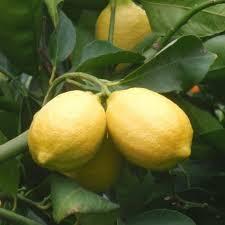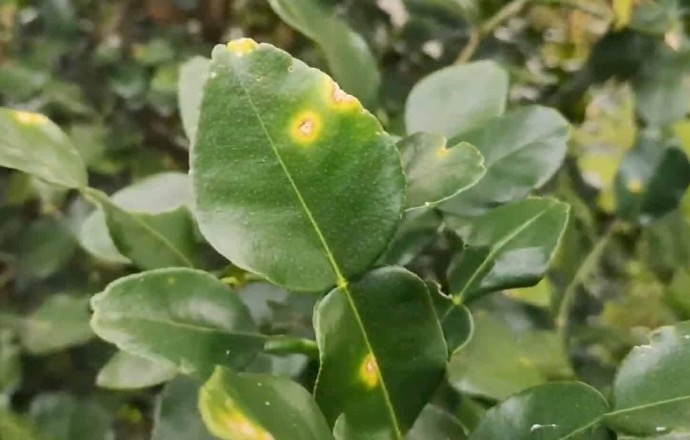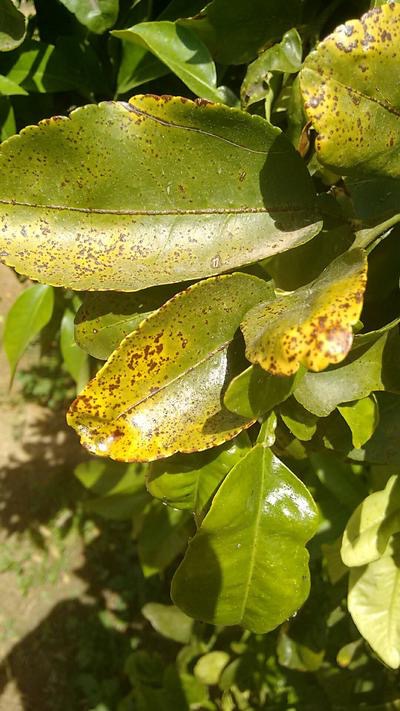Seedless lemon Plant
Seedless Lemon, possibly referring to a specific variety, may have care requirements similar to other lemon trees. Plant in well-draining soil with full sun exposure. Water consistently, especially during dry periods. Pruning can be done to shape the tree and remove dead or crowded branches.

Habit
Tree
Height
3-5 m
Growth
Fast
Soil
Well-drained loamy
Shade
Full Sun
Moisture
Moist
Edible
Yes
Medicinal
Yes
Origin
India, Mediterranean
Climatic Condition
Subtropical, Warm
Temperature (°)
20-35°C
Humidity (%)
50-85%
Potting media
Loam, peat
Fertilizers
Organic, NPK
Watering
Regular
Plant Weight
100-200 g
Flowering Time
Year-round
Soil Ph level
5.5 - 7.5
Water Ph level
5.5 - 7.5
Soil EC
1-2 dS/m
Yield Per Plant
84 kg/tree
NPK ratio
12:06:06
life Span
10-15 years
Health Benefits
Rich in Vitamin C, boosts immunity
Suggested Grow Media or Potting Mix ?
50% loam, 25% compost, 25% sand
Suggested Fertigation/Fertilizers
Fertilize every 4 weeks with a balanced fertilizer.
Common Diseases and Remedies
lemon scab , melonose
irregular scabby or wort like out growth . Small dark brown to black spots . Amount of dead wood increases.
proper spacing .
HEALTH BENEFITS
· Rich in vitamin C, supporting immune health.
· Aids digestion and detoxification.
· Helps regulate blood pressure.
· Contains antioxidants that promote skin health.
What Is An Seedless lemon Tree?
Lemons are a citrus fruit that are oval-shaped and bright yellow in color. They have a smooth, porous skin and can range in color from greenish yellow to bright yellow. Lemons grow on flowering evergreen trees that can grow up to 20 feet tall and have sharp thorns on their twigs.

What Are The Different Types Of Seedless lemon Plants?
Eureka Lemon (Citrus limon 'Eureka'): This is one of the most common lemon varieties, known for its bright yellow fruit and tart flavor. Eureka lemons are typically grown year-round and have a few to many seeds.
Lisbon Lemon (Citrus limon 'Lisbon'): Similar to Eureka lemons, Lisbon lemons are also a popular variety known for their juicy, acidic fruit. They tend to have fewer seeds than Eureka lemons.
Meyer Lemon (Citrus × meyeri): Meyer lemons are a hybrid citrus fruit believed to be a cross between a lemon and either a mandarin or an orange. They are known for their thin, edible skin and sweeter, less acidic flavor compared to other lemons. Meyer lemons also have fewer seeds.
Ponderosa Lemon (Citrus limon 'Ponderosa'): Ponderosa lemons are a large, thick-skinned variety of lemon with a mild, slightly sweet flavor. They can have many seeds and are often used as ornamental plants.
Variegated Pink Lemon (Citrus limon 'Variegata'): This lemon variety is prized for its pink flesh and striped green and yellow skin. It has a slightly sweeter flavor than traditional lemons and may have fewer seeds.
Femminello St. Teresa Lemon: This is a type of lemon from Italy, known for its bright yellow, seedless fruit and high juice content. It's often used in cooking and for making limoncello.

Location
Lemon trees grow best in full sun, in warm areas that don't flood after summer rains, and away from trees, buildings, structures, and power lines. They also prefer mild winters and warm to hot dry summers. Lemon trees can grow in tropical, subtropical, and temperate regions with humid, semi-arid, or arid conditions.
Sunshine
As a citrus variety, lemon trees require full sun, which means about 6 to 8 hours of direct sunlight daily. For indoor growth, simply place them in front of a south-facing or sunny window
Soil
Lemon trees can grow in almost any soil type, but they prefer rich, well-drained, sandy loam soil with a pH of 5.5–7.5. This soil provides nutrients and moisture that helps the tree grow. Lemon trees also need plenty of sunlight and proper irrigation.
Hydration
For one-year-old lemon tree 6 litres of water is enough while for 4-year-old tree about 19 litres of water is need
Nourishment
Lemons contain very little fat and protein. They consist mainly of carbs (10%) and water (88–89%). A medium lemon provides only about 20 calories
Issues
It can damage your teeth. Drinking too much lemon water might erode your tooth enamel. ...
Too much lemon water can upset your stomach. ...
Lemon skins serve as a host for unpleasant germs. ...
The acidity of lemon water may cause or worsen canker sores. ...
Citrus fruits may be a trigger for migraine sufferers.
Benifits-
Lemons are a nutritious fruit that contain vitamin C, fiber, antioxidants, and minerals like potassium, calcium, and magnesium. They may help with the following:
Immune system support: One lemon contains about half of your daily value of vitamin C, which helps your body fight infection.
Anti-inflammatory effects: Lemons contain citrus flavonoids, which fight free radicals and can reduce your risk of brain disease.
Heart health: Lemons contain antioxidants that support heart health.
Kidney stones: Lemons may help prevent kidney stones.
Digestive issues: Lemons may help with digestive issues.
Cancer: Lemons may help reduce your risk of cancer.
Skin health: Lemons may help improve your skin health.

FAQs About Growing Seedless lemon
What are lemons?
Lemons are a cross between a citron and a sour orange, and are native to Asia. They contain vitamin C, fiber, and minerals, and are low in calories.
What are the nutrients in lemons?
A medium lemon contains about 20 calories, 89% water, 1.1 grams of protein, 9.3 grams of carbs, 2.5 grams of sugar, 2.8 grams of fiber, and 0.3 grams of fat.
What are some uses for lemons?
Lemon zest is often used in baking, and lemon tree leaves can be used to make tea. The high acidity of lemons makes them good cleaning aids.
What types of lemons are there?
The most common types of lemons are the Meyer, Eureka, and Lisbon lemons.
What are some tips for growing lemons?
Citrus trees need full direct sunlight of at least 6 hours for best results. When you bring a plant from nursery, keep it in indirect bright light for three to four days, then repot so that the plant gets time to acclimatize. After repotting, keep it in shade or indirect light for a week to prevent the transplant shock.

